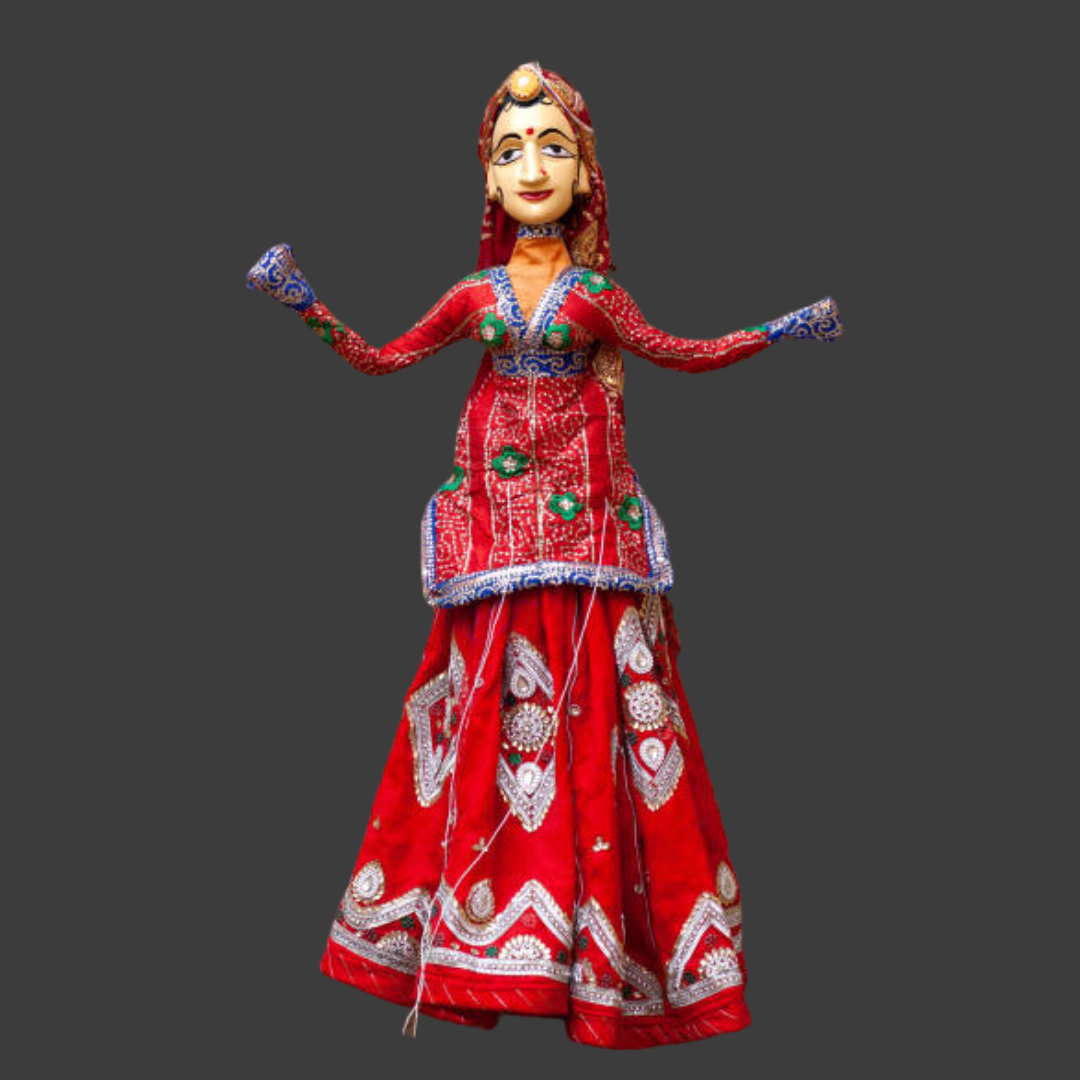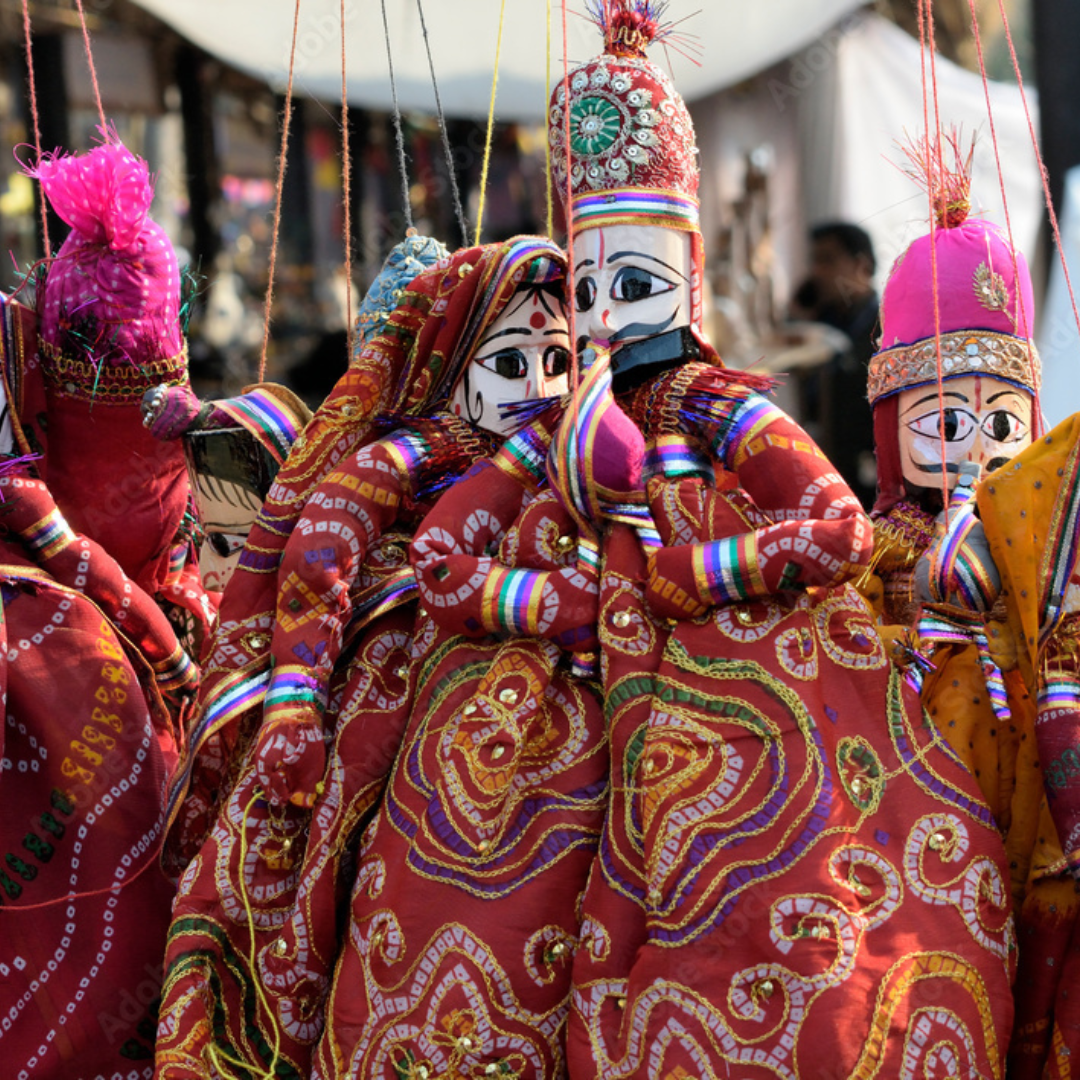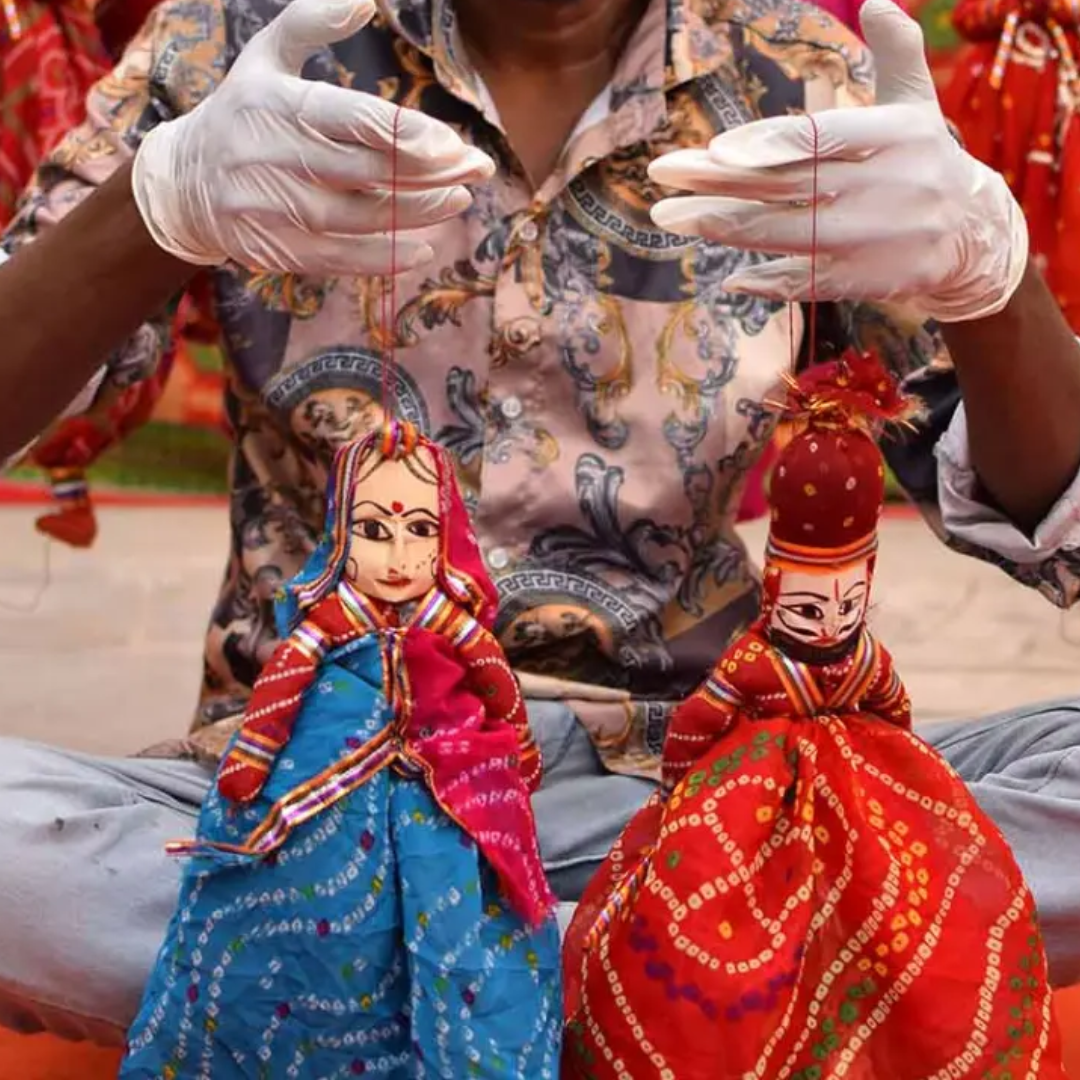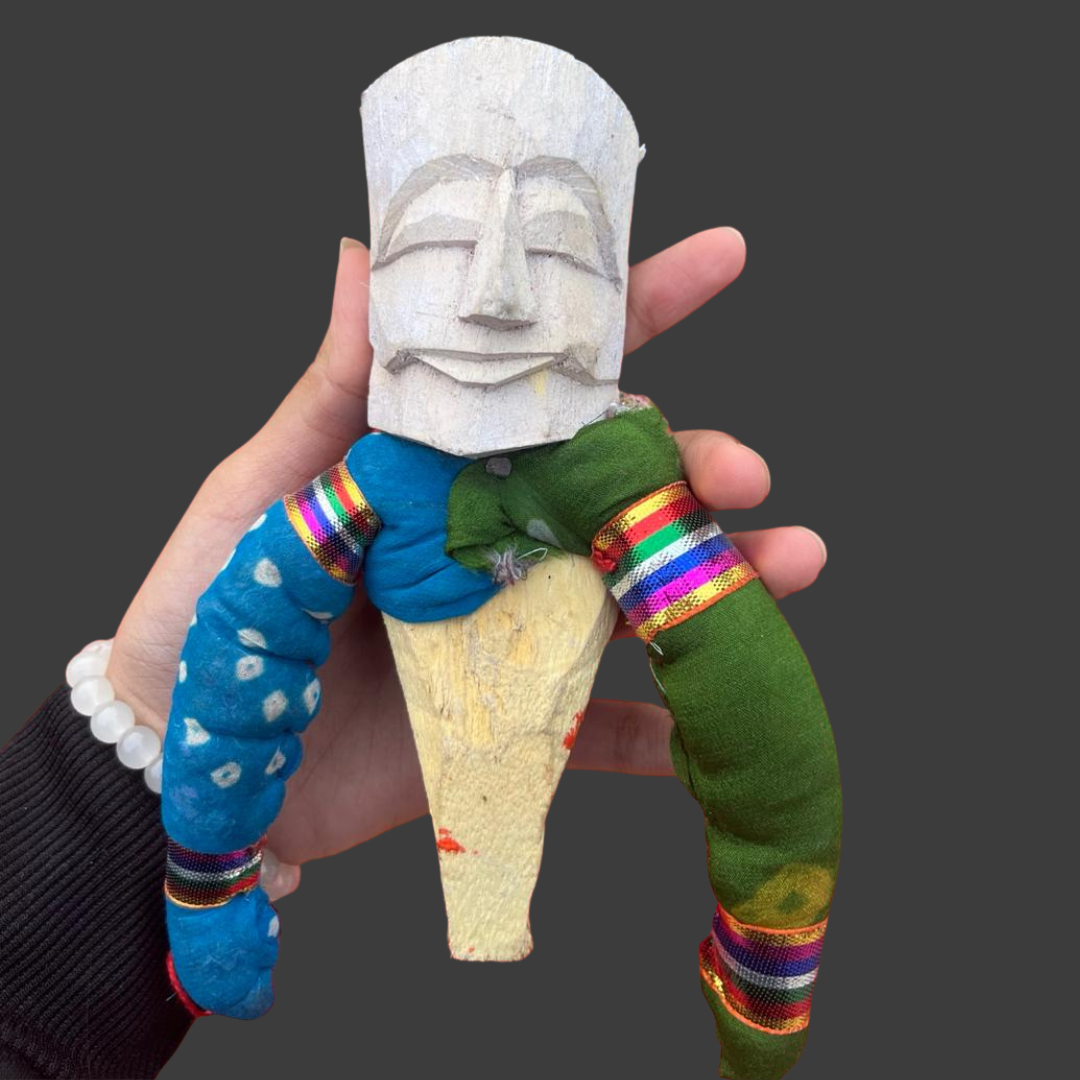
Map Loading...
Katputli
Rajasthan
Kathputli, India’s most celebrated string puppet tradition. Vibrant and instantly recognizable, Kathputli puppetry remains a living heritage of Rajasthan, unfolding centuries-old stories through deft movement and bright costumes.
Kathputli, meaning “wooden doll,” is an age-old theatrical tradition native primarily to Rajasthan. These puppets, typically about 30 centimeters tall, are carved from a single piece of wood, painted in stylized patterns, and dressed in bright regional fabrics. Performed by skilled artisans, the puppets are manipulated by strings, creating lively and rhythmic scenes that enthrall local and foreign audiences alike.
The making of a Kathputli puppet is a skilled process, using local mango wood for durability. Artisans begin by carving the head, often with elongated eyes and stylized features, then smooth and paint the surface in bright tones, usually yellow for faces. The torso is fashioned from cloth and stuffed with cotton, wrapped with fabric evocative of medieval Rajasthani attire; puppets typically lack legs, masked by flowing skirts. Strings, usually about 40 inches, attach to the head for deft manipulation.
Kathputli’s unique qualities lie in its blend of visual storytelling and craftsmanship. Unlike rod puppetry elsewhere, Rajasthani string puppets are distinct in their structure—wooden heads, jointless arms, brightly painted faces, and iconic long skirts. Their market presence has expanded, with demand from collectors, educational programs, tourism, and urban decor markets, alongside traditional stage performances.
Material
Wood, Cloth
Technique
wood carving
Showcase



